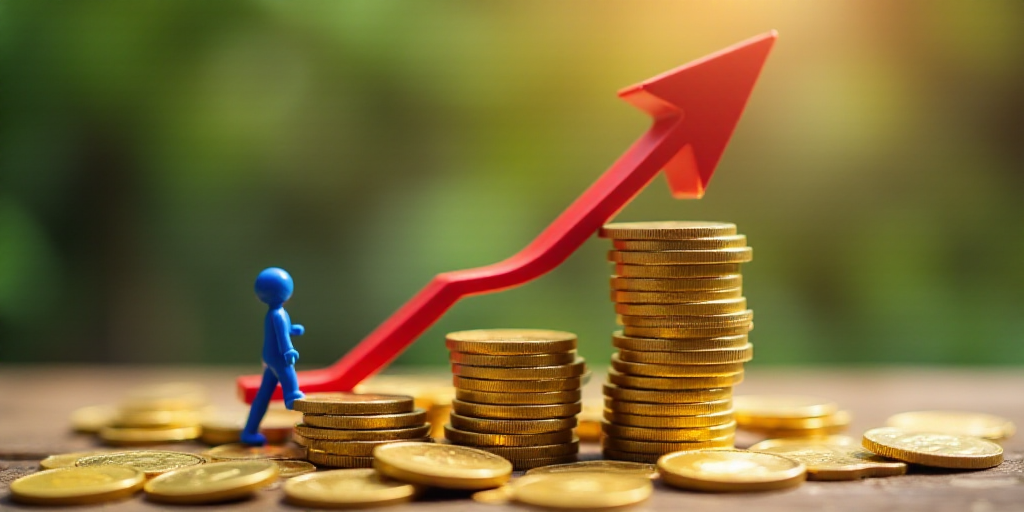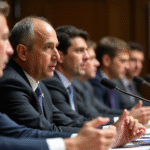Introduction
Following the shock and awe of Donald Trump’s return to the White House, it has become clear that his most destructive economic policies will be contained by market forces, institutional structures, and underlying trends. Moreover, these trends should position the United States for exceptional growth over the medium and long term.
Market Discipline and Institutional Independence
In December, I argued that while some of President Trump’s policies would be stagflationary—reducing growth and increasing inflation—these effects would ultimately be mitigated by four factors: market discipline, an independent Federal Reserve, the president’s own advisors, and the slim majorities held by Republicans in Congress.
The script has unfolded as expected. The reactions of stock, bond, credit, and currency markets forced Trump to backtrack on his proposed “reciprocal” tariffs against the majority of the United States’ trading partners and even plead with China to negotiate. In the game of chicken between Trump and Chinese President Xi Jinping, Trump blinked first. Market operators overpowered the tariffs, and bond watchdogs proved more powerful than even the U.S. president, as political strategist James Carville observed a quarter-century ago.
Then came the game of chicken with Federal Reserve Chair Jerome Powell. Trump flinched first—at least for now—as markets crashed when he suggested firing Powell, quickly reversing course and stating he has “no intention” of doing so. Meanwhile, Powell has made it clear that the president lacks legal authority to dismiss him.
Advisors and Political Actors
Similarly, although fringe figures like Peter Navarro, Trump’s chief trade advisor, initially took the lead by appealing to Trump’s self-image as “the tariff man,” this did not last. Once markets wobbled, those advocating for a “scale up to scale down” tariff strategy, such as Treasury Secretary Scott Bessent and Stephen Miran, president of the Council of Economic Advisors (a former colleague of mine), seemed to prevail.
Additionally, some Republican lawmakers have supported legislation limiting the president’s tariff authority, and numerous other political actors—from state governors and attorneys general to business groups—have sued the administration for what they call illegal overreach.
Technological Advancements and Economic Growth
Beyond these four barriers lies the technological factor. The U.S. economy’s potential growth is expected to approach 4% by 2030, significantly higher than the recent International Monetary Fund estimate of 1.8%. The reason is clear: the United States leads in ten out of twelve industries shaping the future, with China only leading in electric vehicles and green technologies. The U.S. growth averaged 2.8% in 2023-24, and productivity growth averaged 1.9% since 2019, despite the pandemic-induced downturn.
Since the launch of ChatGPT late in 2022—a prediction I made in my 2022 book, Megathreats—AI-related investments have fueled a surge in U.S. capital expenditures. Even tariffs and the resulting uncertainty have not fundamentally altered the direction of most large tech companies, AI hyperscalers, and others. In fact, many have doubled down on AI investments.
If growth shifts from 2% to 4% due to technology, that implies a 200 basis point boost in potential growth. However, even trade protectionism and draconian immigration restrictions would reduce potential growth by no more than 50 basis points at most. This is a four-to-one ratio of positive to negative factors; technology will ultimately prevail over tariffs in the medium term.
As I argued recently elsewhere, even if Mickey Mouse were president, the U.S. would still be on track for 4% growth because private sector U.S. innovation promises to compensate for poor policies and erratic policymaking.
Capital Inflows and the U.S. Current Account Deficit
The AI investment boom also implies that, with or without high tariffs, the U.S. current account deficit will remain high and rise over time—reflecting the gap between slow saving and thriving investment. However, given that exceptional U.S. growth will outlast Trump, capital inflows will persist despite the trade policy noise.
While fixed-income investors may withdraw from U.S. assets and the dollar, equity investors are likely to maintain an overweight position in U.S. assets, potentially doubling down on their bets. Any significant dollar weakening will be gradual, and the U.S. currency is unlikely to lose its status as the global reserve currency abruptly.
Long-term Implications for the U.S. and Europe
Over time, the greater growth, combined with current redistribution policies, will weaken populist forces in the U.S. Meanwhile, Europe will continue to face headwinds from demographic aging, energy dependence, excessive reliance on Chinese markets, insufficient domestic innovation, and stagnant 1% growth.
The 50-year innovation gap between the U.S. and Europe will only widen as AI-driven growth shifts from logarithmic to exponential.
In this context, it’s highly likely that far-right populist parties will take over much of Europe, as they have already done in some countries. While the U.S. appears to be veering towards anti-liberalism, Europe may seem like the last global bastion of liberal democracy; however, this narrative could reverse in the medium term.
This scenario becomes more probable if Europe continues to ignore the recommendations of former Italian prime ministers Enrico Letta and Mario Draghi. In their 2021 report on European competitiveness, Draghi highlighted that intercommunity tariffs on goods and services are significantly higher than those Trump has threatened to impose. A positive aspect of Trump’s intimidation is that it could force Europe to wake up.
Inflation and Economic Prospects
Undoubtedly, U.S. inflation will surge above 4% this year. Trade agreements with most countries will limit the tariff rate to an undesirable but manageable 10-15%, and a likely downscaling with China will keep that rate around 6% on average, driving a gradual decoupling of the two economies.
This will negatively impact real available income (adjusted for inflation), stalling growth in the fourth quarter of this year and potentially triggering a shallow recession lasting a few quarters.
However, a credible Federal Reserve commitment to anchoring inflation expectations will allow for interest rate cuts once growth stalls, and a modest rise in unemployment will weaken inflation. By mid-2026, U.S. growth will experience a strong rebound, but Trump will have suffered politically, foreshadowing his party’s defeat in midterm elections.
Fears of the U.S. descending into autocracy will subside, and the American democracy will survive Trump’s shakeup. Eventually, the U.S. economy will thrive.
About the Author
Nouriel Roubini
Principal advisor at Hudson Bay Capital Management LP and emeritus professor at New York University’s Stern School of Business, Roubini is the author of most recently, Megathreats: Ten Dangerous Trends That Imperil Our Future, and How to Survive Them (Little, Brown and Company, 2022).
Copyright: Project Syndicate, 1995 – 2025
www.project-syndicate.org






